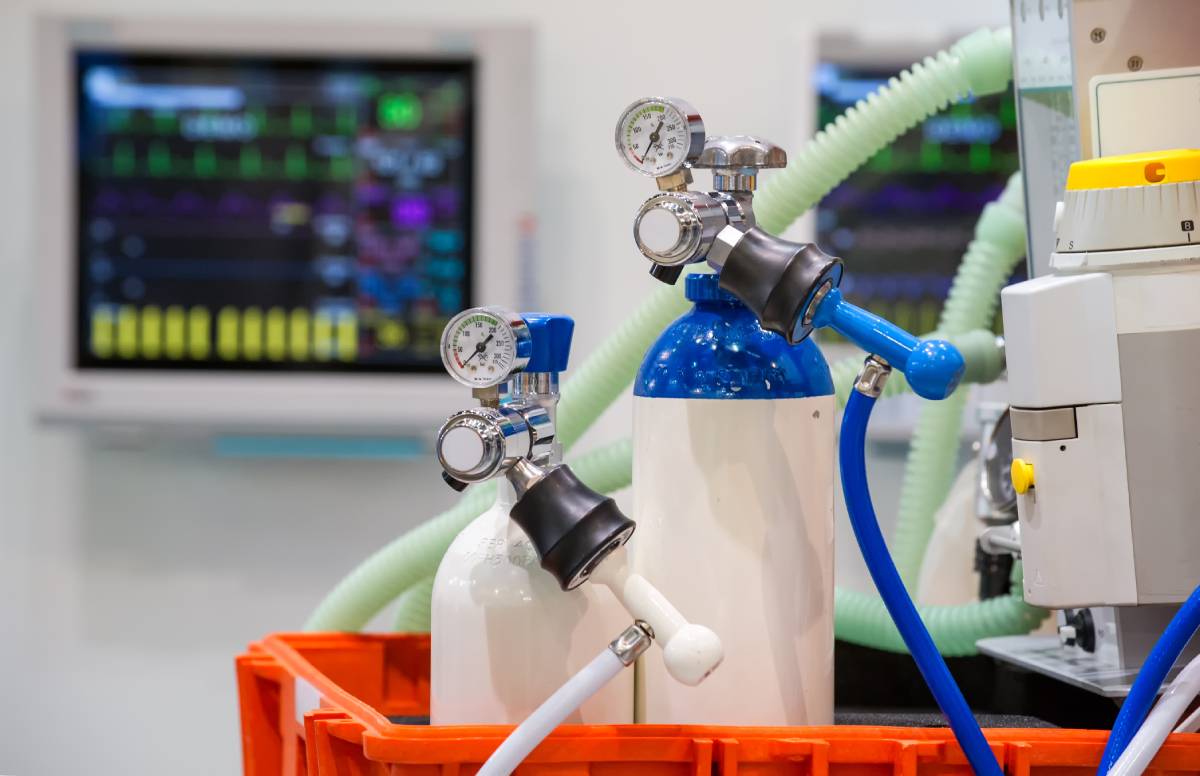
There is a significant need for cost-effective, suitable equipment for anesthesia providers in low-resource areas.2 Low-resource settings are mostly found in countries defined by the World Bank as low-income countries.1 However, it is important to highlight that low-resource settings and low-income countries are not always synonymous, as there exist resource inequalities within countries.1 As Michael Dobson points out in his book Anesthesia at the District Hospital, “good anesthesia depends much more on the skills, training, and standards of the anesthetist than on the availability of expensive and complicated equipment.2 Special consideration must be given to the suitability of anesthesia equipment in economically challenged settings so anesthesiologists can administer safe and effective care to patients.2
In areas with sufficient resources, anesthesia machines are high-tech workstations which necessitate a stable electricity supply and compressed gases (like oxygen).2 They contain sophisticated controls and can deliver a wide range of anesthetics to patients.2 The issue is that this equipment requires highly trained and skilled biomedical technologists for service and maintenance.2 In low-resource settings, where electricity is variable and compressed gasses are rare, these machines are nonfunctional.2 Therefore, anesthesiologists working in low-resource areas must depend on a different type of anesthesia equipment.2 The exact requirements for providing safe anesthesia in resource-poor settings have never been properly defined.3 Guidelines published in 1993 by the World Federation of Societies of Anesthesiologists have been the best recommendations to follow.3 The basic requirements for administering anesthesia in low-resource settings include the equipment for delivering the anesthetic, a monitoring apparatus, a cannula, rubber gloves, and medications (both anesthetic and emergency drugs).3
Although there has been significant reduction in anesthesia-related perioperative mortality in the last 50 years, patients undergoing surgery in low-resource areas still have two to three times increased mortality risk compared with high-resource areas.4 In the presence of limited financial and logistical resources, anesthesiologists often administer the same anesthetic agents irrespective of type of surgical procedure, which contributes to the increase in anesthetic-related morbidity and mortality seen in resource-deficient areas.4 Researchers in the Ivory Coast have pushed for expanding the use of spinal anesthesia in low-resource settings, as opposed to general anesthesia.5 In addition to its cost-effectiveness, spinal anesthesia acts locally, helping to prevent airway-related complications.4,5 In low-resource areas, more focus on spinal anesthesia may prevent anesthesia-related morbidity and mortality.5
Furthermore, according to the Lancet Commission on Global Surgery, more than 90% of people in resource-poor areas do not have access to emergency or essential surgery.6 Interestingly, the primary limitation is not trained surgeons or operating rooms.6 Instead, it is inadequate anesthesia services, known as the “anesthesia gap”, that often results in absent or delayed surgical care.6 Researchers at Harvard University have advocated for the emergency use of ketamine in low-resource settings, as a short-term solution to the anesthesia gap.6 Ketamine is safer than most anesthetics because ventilation is typically well maintained and life-threatening hemodynamic disturbances are rare.6 Also, it can be administered in an emergency situation by non-anesthetist experienced providers.6 In a prospective series of more than 1,200 surgical cases in Kenya, there were no deaths or serious complications related to ketamine anesthesia.7 Ketamine is not designed to compete with formal anesthesia services, but can be used in emergency situations in low-resource settings where there are no reasonable alternatives.6,7
Widespread, safe anesthesia is achievable, but it requires a commitment by health systems to provide anesthesiologists with the basic requirements for anesthesia.3 In working to close the anesthesia gap, it is important to recognize the unique challenges presented by low-resource settings.3
References
- Baker, T. (2015). Critical Care in Low Resource Settings. Karolinska Institutet. https://doi.org/10.1007/978-1-4939-0811-0_16
- Roth, R., Frost, E., Gevirtz, C., & Atcheson, C. (2015). The Role of Anesthesiology in Global Health. Springer International Publishing. ISBN: 978-3-319-09422-9
- McCormick, B., & Eltringham, R. (2007). Anaesthesia equipment for resource-poor environments. Anaesthesia, 62(2), 54-60. https://doi.org/10.1111/j.1365-2044.2007.05299.x
- Bharati, S., Chowdhury, T., Gupta, N., Schaller, B., Cappellani, R., & Maguire, D. (2014). Anaesthesia in underdeveloped world: Present scenario and future challenges. Niger Med J, 55(1), 1-8. https://doi.org/10.4103/0300-1652.128146
- Mgbakor, A., & Adou, B. (2011). Plea for greater use of spinal anaesthesia in developing countries. Tropical Doctor, 42(1), 49-51. https://doi.org/10.1258/td.2011.100305
- Suarez, S., Burke, T., Yusufali, T., Makin, J., & Sessler, D. (2018). The role of ketamine in addressing the anesthesia gap in low-resource settings. Journal of Clinical Anesthesia, 49, 42-43. https://doi.org/10.1016/j.jclinane.2018.06.009
- Burke, T., Suarez, S., Senay, A., Masaki, C., Rogo, K., & Sessler, D. et al. (2017). Safety and Feasibility of a Ketamine Package to Support Emergency and Essential Surgery in Kenya when No Anesthetist is Available: An Analysis of 1216 Consecutive Operative Procedures. World J Surg, 41(12), 2990-2997. https://doi.org/10.1007/s00268-017-4312-0

